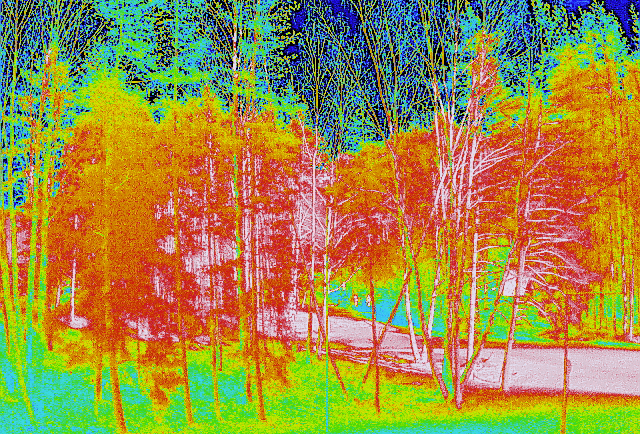AI Upscaling & Enhancement: Sharpening Low-Resolution Thermal Images
Sharpening low-resolution thermal images to reveal critical details and improve object recognition
Rytis BURAČAS
2/4/20252 min read


Thermal imaging has become an indispensable tool across various industries, from security and surveillance to industrial inspection and medical diagnostics. However, a common challenge with thermal cameras is their relatively low resolution compared to visual cameras. This limitation can hinder the clarity and detail of thermal images, making it difficult to discern critical information and identify objects with precision.
Fortunately, advancements in artificial intelligence (AI) are revolutionizing thermal imaging. AI-powered upscaling and enhancement techniques are emerging as powerful solutions to overcome the resolution limitations of thermal cameras.
The Challenge of Low-Resolution Thermal Images
Traditional thermal cameras often capture images with limited pixel counts, resulting in blurry or pixelated visuals. This lack of detail can pose significant challenges in applications where precise object recognition and identification are crucial. For instance, in security scenarios, low-resolution thermal images may make it difficult to distinguish between a person and an animal or to identify specific features of a potential threat.
AI to the Rescue: Upscaling and Enhancement
AI-driven upscaling and enhancement algorithms are designed to address the limitations of low-resolution thermal images. These algorithms leverage deep learning techniques to analyze and reconstruct thermal images, effectively increasing their resolution and enhancing their visual quality.
How AI Upscaling Works
AI upscaling algorithms are trained on vast datasets of paired low-resolution and high-resolution thermal images. During the training process, the AI model learns the complex relationships between the low-resolution and high-resolution versions. This enables the model to predict the finer details that are missing from a low-resolution input image and reconstruct a high-resolution output image with greater clarity and detail.
Benefits of AI Upscaling and Enhancement
Improved Image Clarity and Detail: AI upscaling significantly enhances the visual quality of thermal images, revealing previously hidden details and making it easier to discern objects and patterns.
Enhanced Object Recognition: By increasing the resolution and sharpness of thermal images, AI upscaling improves the accuracy and reliability of object recognition, which is crucial in applications like security, surveillance, and autonomous systems.
Increased Detection Range: AI-enhanced thermal images can extend the effective detection range of thermal cameras, allowing for earlier identification of potential threats or anomalies.
Reduced Equipment Costs: AI upscaling can enable the use of lower-resolution (and less expensive) thermal cameras to achieve results comparable to higher-resolution systems, leading to cost savings.
Applications Across Industries
AI upscaling and enhancement of thermal images have broad implications across various industries:
Security and Surveillance: Enhanced thermal images can improve threat detection, intruder identification, and perimeter security.
Industrial Inspection: AI-powered enhancement can facilitate the detection of subtle temperature variations in machinery and equipment, enabling predictive maintenance and preventing costly failures.
Autonomous Systems: High-resolution thermal images can improve the ability of self-driving cars, drones, and robots to navigate in low-light conditions and detect obstacles or pedestrians.
Medical Diagnostics: AI upscaling can enhance the clarity of thermal images used in medical applications, such as detecting tumors or monitoring blood flow.
The Future of Thermal Imaging
AI-driven upscaling and enhancement techniques are poised to transform thermal imaging, unlocking new possibilities and expanding its applications across industries. As AI technology continues to advance, we can expect even more sophisticated algorithms that can further improve the resolution and quality of thermal images, providing invaluable insights and driving innovation in various fields.
